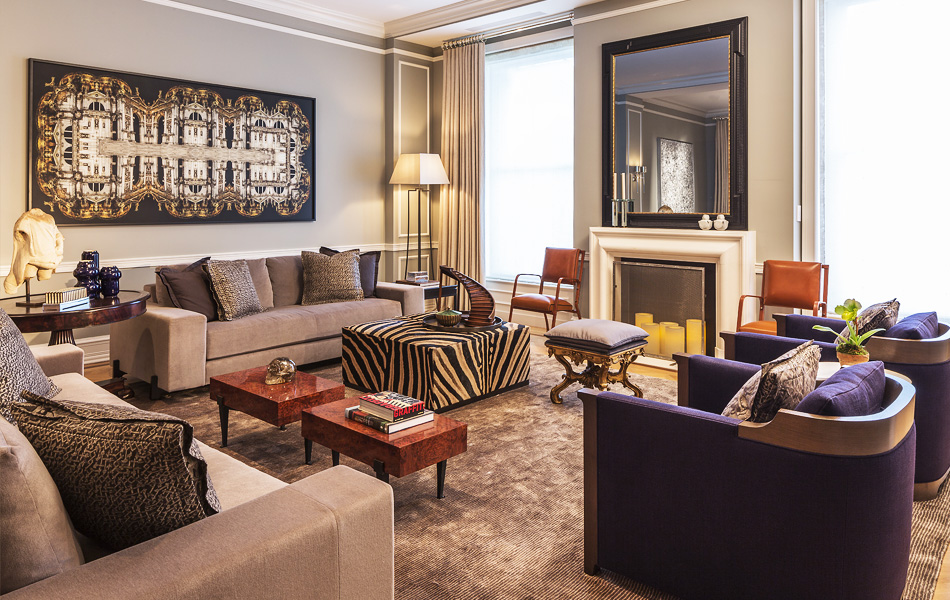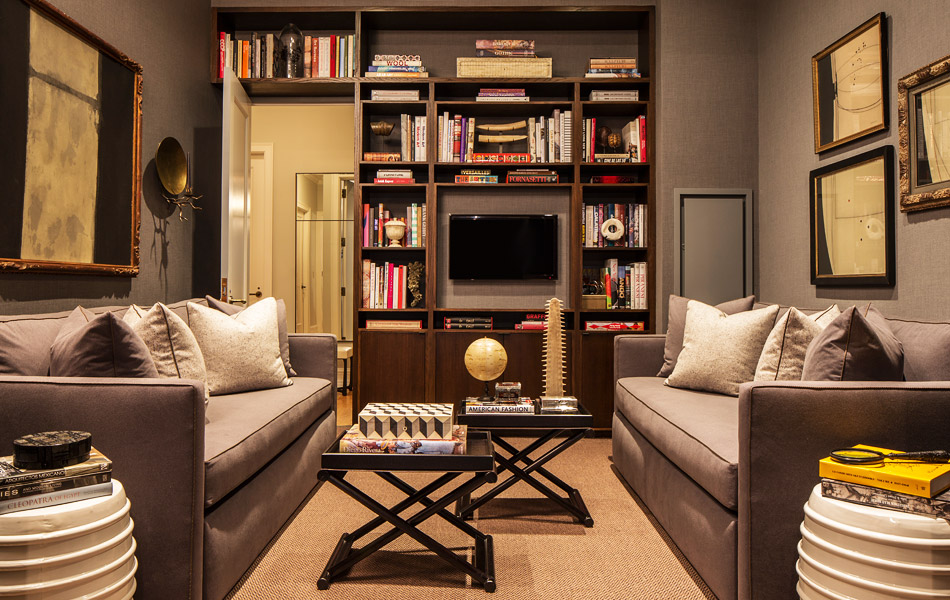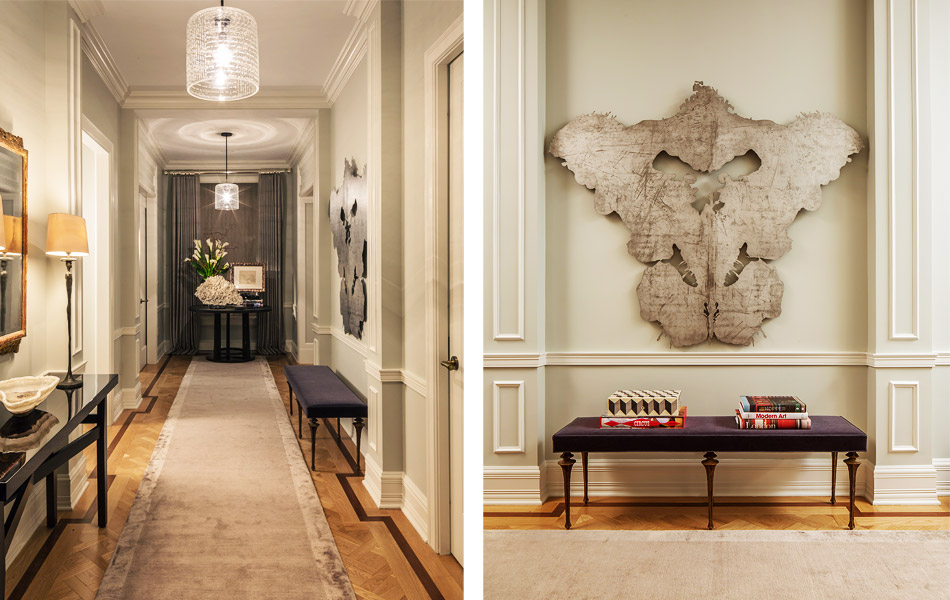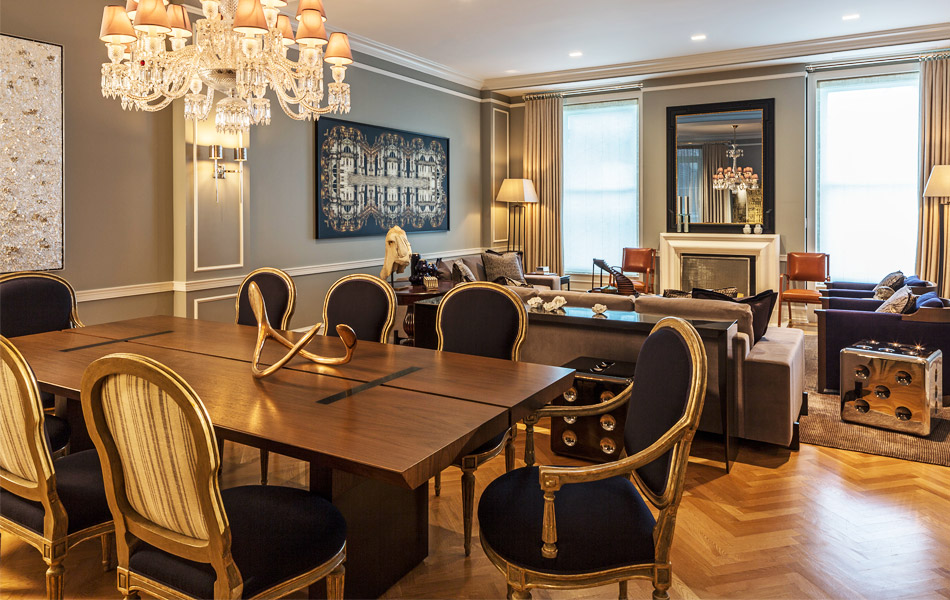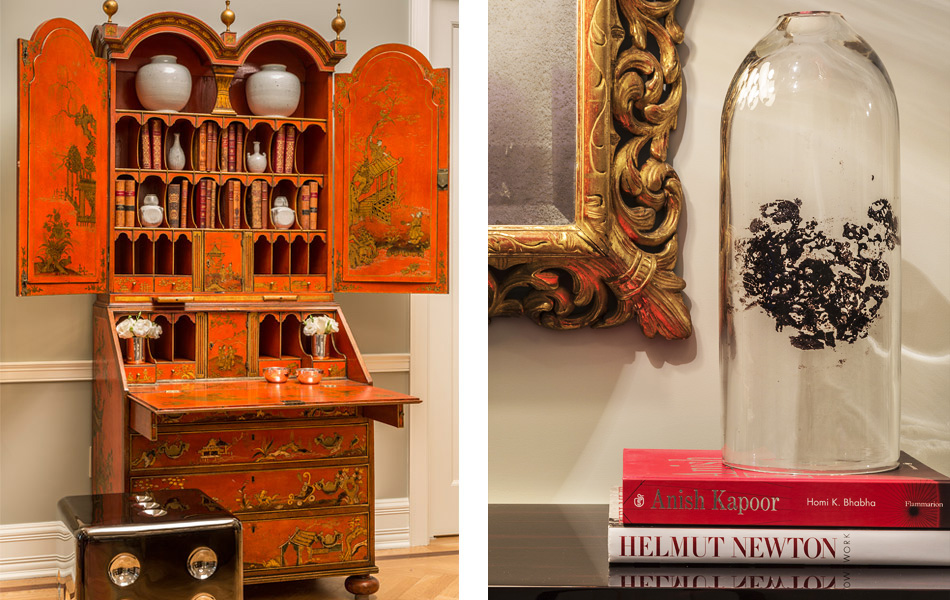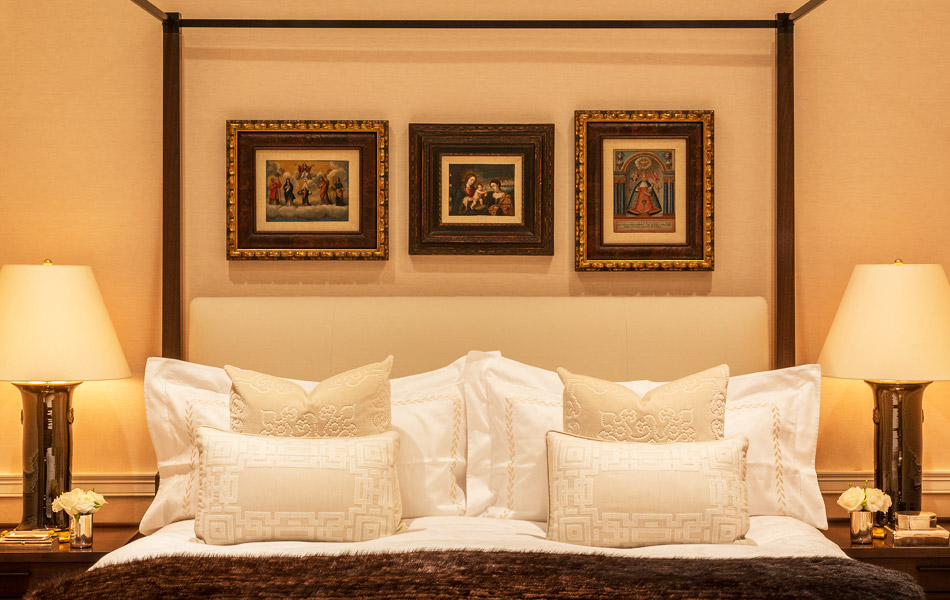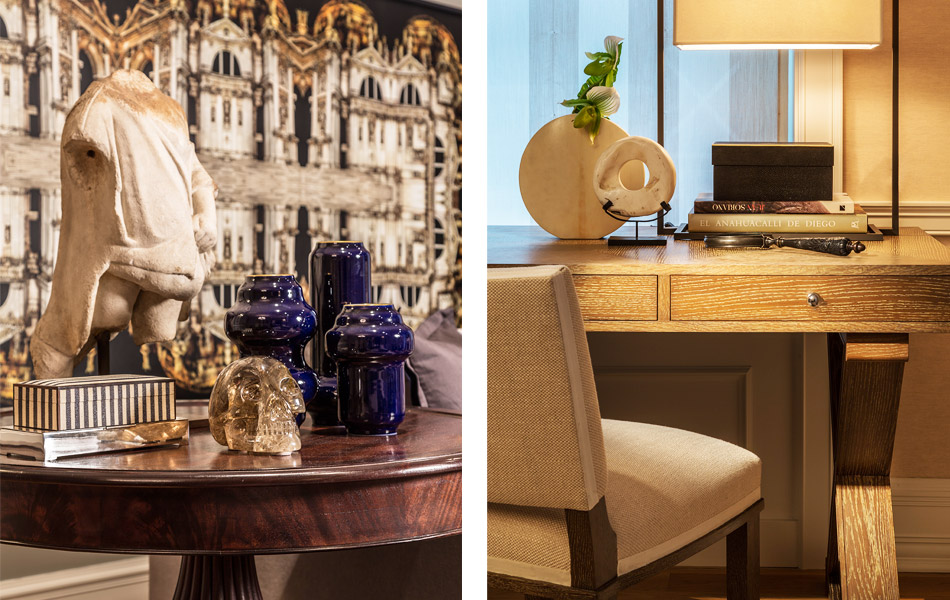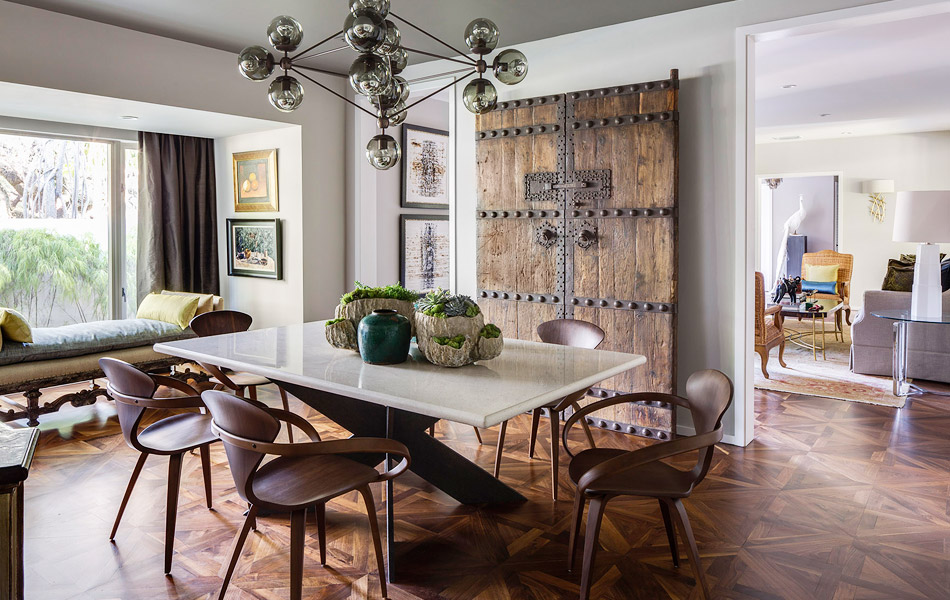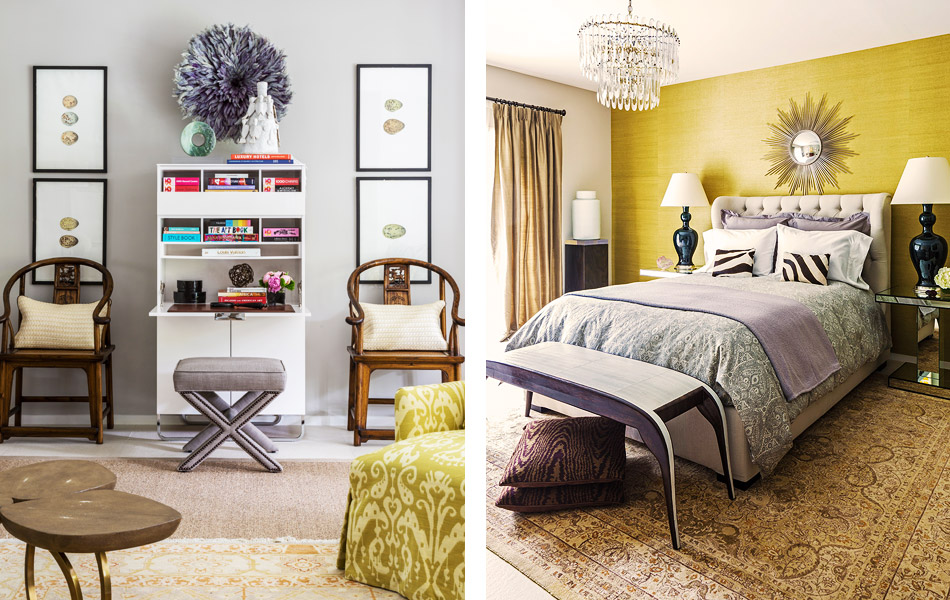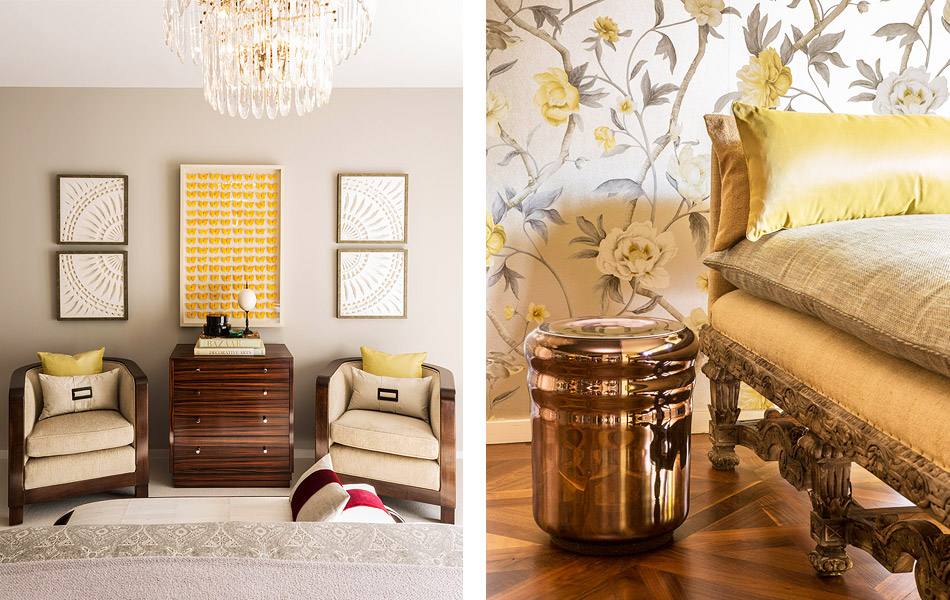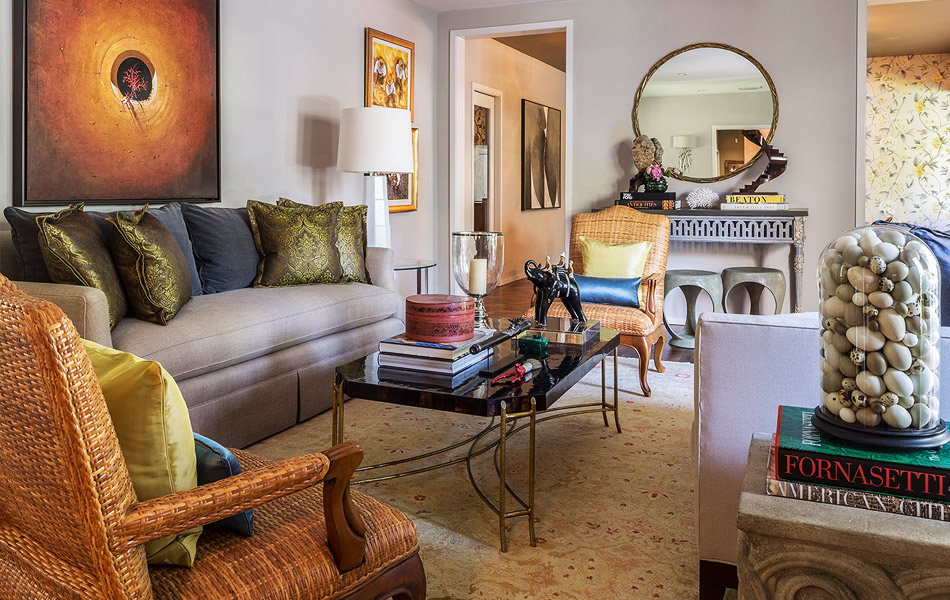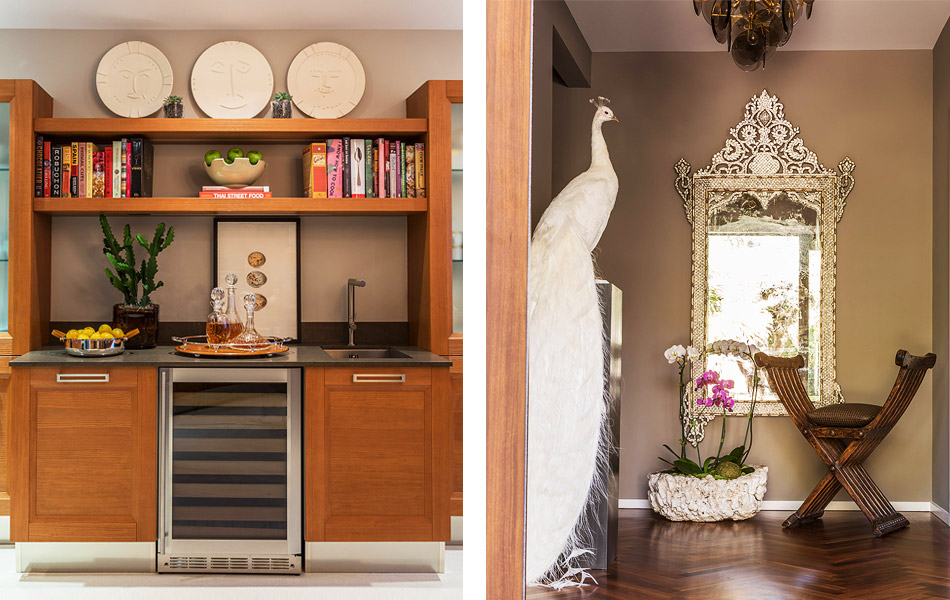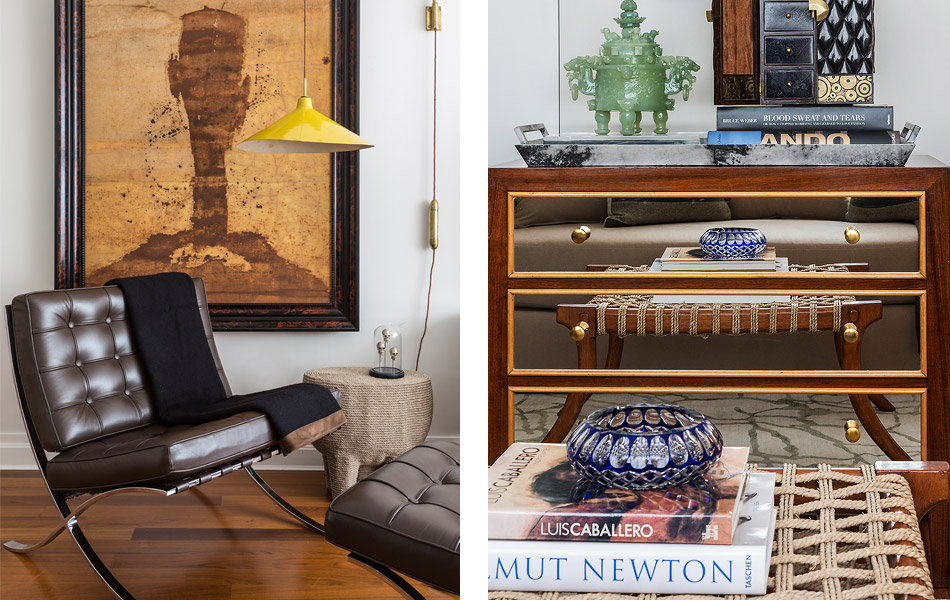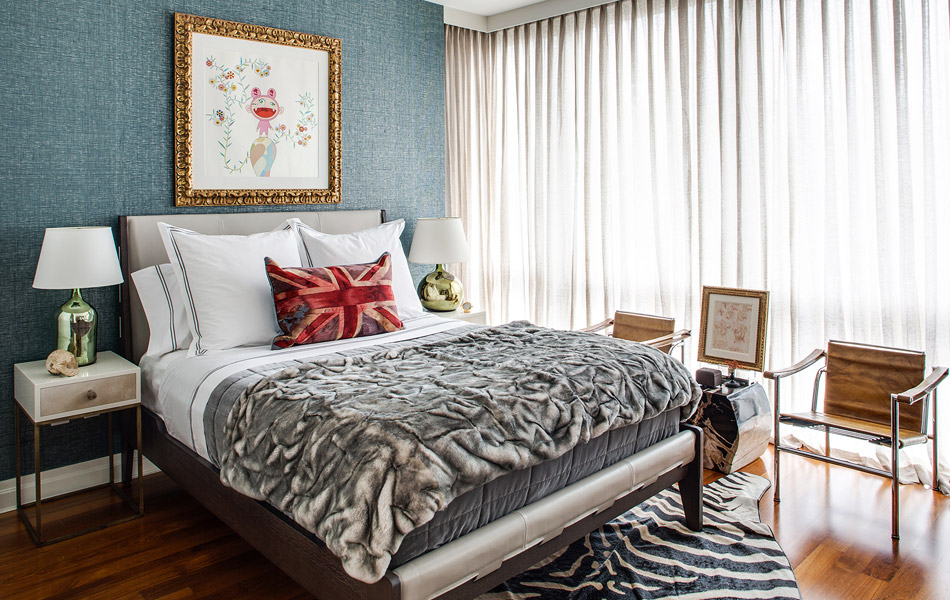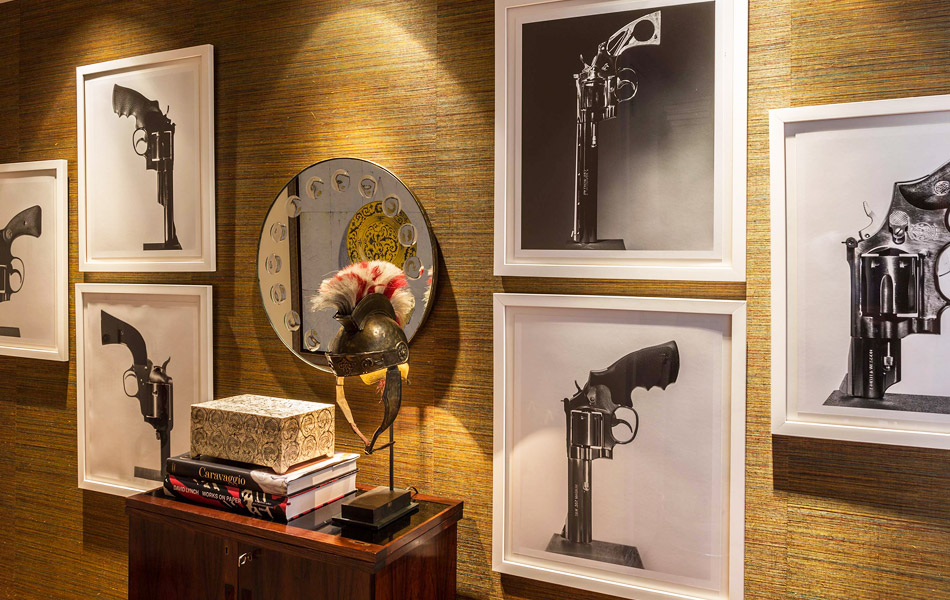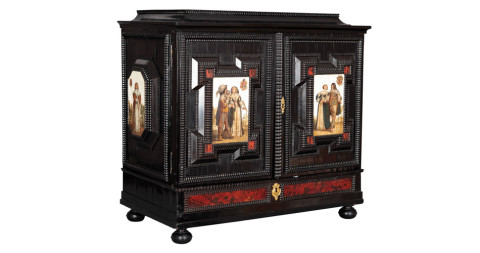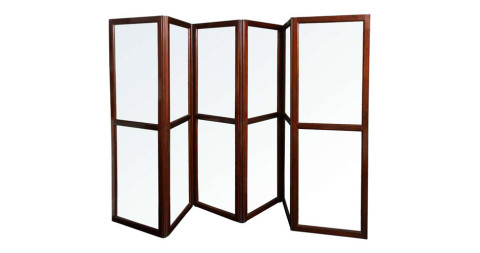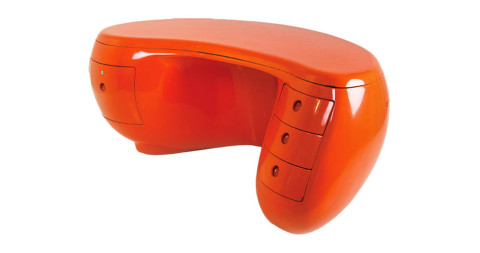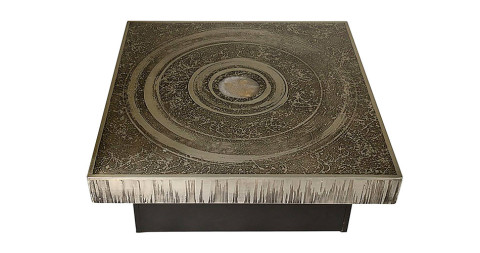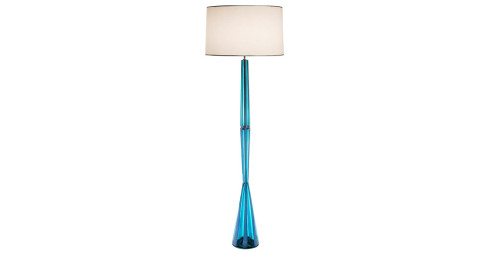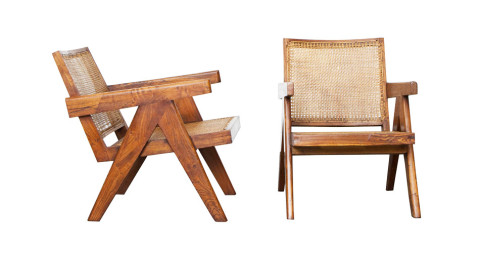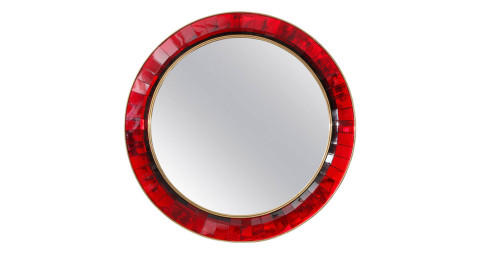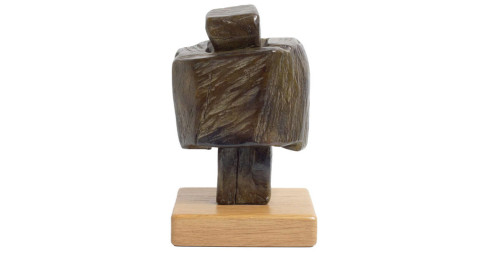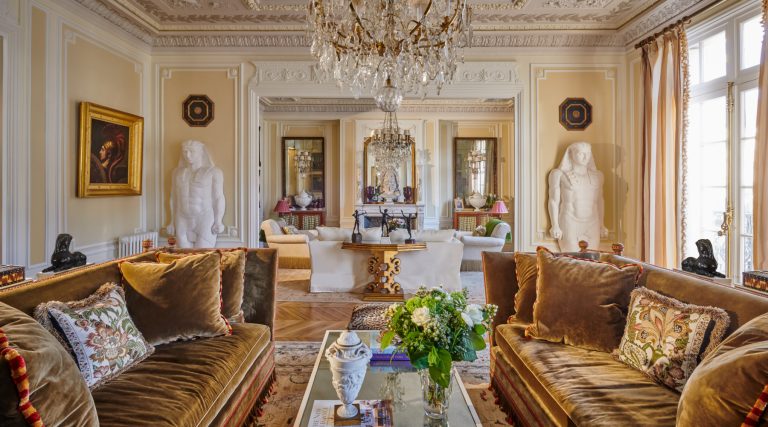
December 21, 2015Argentine-born Mercedes Desio and Colombian-born Alberto Villalobos launched their New York interior design firm in 2008 (photo by Julio Gaggia). Top: In New York’s NoMad district, the airy, cheerful living room of an apartment for a young couple combines neutral hues with pops of color and features a Holly Hunt sofa, Christian Liaigre table and Rug Company carpet (photo by Marco Ricca).
She does all the talking,” says Alberto Villalobos, referring to his business partner, Mercedes Desio.
“No, he does all the talking; I just translate,” counters Desio, as they both collapse into laughter.
This good-natured exchange says more about the duo than might immediately be apparent. For one thing, it illustrates the easy symbiosis of their relationship, forged at the New York School of Interior Design (NYSID), where they met at orientation in 2003 and instantly clicked; they can give the impression of being a couple, but Villalobos, 35, is gay and single, Desio, also 35, is straight and married (to Algerian-born Hichem Kerma, who is a consultant). For another, it hints at their temperaments. One senses that Villalobos is the more energetic and loquacious one. When it comes to their work, he admits, “I’m more OCD. I obsess more about wanting things a certain way.” Desio is more easygoing and grounded. “Mercedes wants things to be livable,” Villalobos explains.
Finally, Desio is the translator in more ways than one. The Colombian-born Villalobos — brown-eyed and handsome — is quick to chime in with his thoughts. Desio — soft-spoken, beautiful in a way typical of her Italian heritage and blessed with an open, welcoming smile — listens patiently and quietly before elaborating on, or more sharply articulating, her partner’s answers. She also functions as a literal translator. Although both speak English and Spanish, Desio is also fluent in Italian and French, thanks to her peripatetic upbringing: When she was a young girl, her family moved from Lomas de Zamora, in Argentina, to a town near Parma, Italy, then to Lugano, Switzerland, when she was seven, before finally settling in Miami when she was 14.
“Each room is a cabinet of curiosities,” Desio says of the firm’s design strategy. “It’s about building a fantasy.”
The pair’s polyglot facility is one of the keys to the success of their Manhattan-based interior design business, Villalobos Desio, helping it attract and retain Latin American and European clients. “They are often bilingual or trilingual,” says Villalobos. “Because we are international, we understand their thought processes in a different way.”

The designers won raves for their tiny Renaissance studiolo–inspired room at last year’s Kips Bay Decorator Show House; the Swedish Arts & Crafts table was from H.M. Luther, the Jacques Quinet armchair was from Magen H, the fox was from Creel and Gow, and the Jules Leleu Art Deco chairs, Stephen Downes alabaster sconces and Achille Salvagni cabinet were from Maison Gerard.
“Clients can let down their guard and not feel that they have to communicate in a language in which they find it difficult to express themselves accurately,” adds Desio.
Although still a relatively young enterprise — the firm launched in 2008 — Villalobos Desio seems to be on everyone’s radar lately. The pair received tremendous publicity during last year’s Kips Bay Decorator Show House for their transformation of a minuscule room under a staircase into a showstopping studiolo. They are currently working on a larger scale, with expansive apartments at 530 Park Avenue in Manhattan and in the new Centurion condominium building on West 56th Street, as well as a 3,000-square-foot apartment in a Victorian building in London.
In seven short years, the firm has established a reputation for creating a deftly layered contemporary look that emphasizes a high level of craftsmanship. “We don’t like clutter,” says Villalobos. “But that doesn’t mean interiors can’t be rich. We like to tell stories. Built rooms are a thread where we take into account the durability of things, how they are upholstered, how they will age and where antiques incorporate the history of the clients’ travels.”
“Each room is a cabinet of curiosities,” adds Desio. “It’s more of a Renaissance approach. The objects speak about the clients’ backgrounds, but with a modern twist. And sometimes it’s also about building a fantasy.”
Given the partners’ backgrounds, it’s no surprise that Villalobos Desio rooms exude a well-traveled atmosphere, often featuring a stimulating juxtaposition of classic modern pieces with furnishings and objects gathered from around the globe. The latter exemplify the pair’s love of craftsmanship. They lean toward intricately worked pieces, such as an ornately carved jade vessel or a complexly inlaid Syrian mirror, rather than more rough-hewn tribal objects. That is not to say that organic or simple elements — a rustic Chinese door or a chunky Mathieu Nab sculpture — are verboten. “Everything is from everywhere,” says Desio. “It’s about finding the right piece from the right era that fits into the mix.”

The pair met in 2003, five years before launching their firm, while studying at the New York School of Interior Design.
Villalobos grew up in Valle del Cauca, the Colombian department whose capital is Cali. He studied economics in Bogotá from 1998 to 2000 but quit because, he says, “it wasn’t my thing. I knew that if I finished my studies, I’d have to work in that career for the rest of my life.” Villalobos transferred to the new interior design program that had just been established at LaSalle College, in Bogotá, graduating with the equivalent of a bachelor of arts in 2003. But, he says, “I was unsatisfied with the level of education I got there,” so he enrolled at NYSID.
Desio also studied finance and economics, at New York University’s Stern School of Business, and also quickly realized that this was not to be her métier. She, however, completed her bachelor of science in case her plan B — a career in interior design — did not pan out. Shortly after graduating, she, like Villalobos, started at NYSID.

Villalobos and Desio conceived this small study in a Manhattan pied-à-terre as a cocoon where the client could hide away to work among his collectibles and books. They designed the custom shutter doors and the cabinetry and shelving, treating each element with special care.
“By our first or second year,” remembers Desio, “we started joking about opening a business. The joke became a reality when we graduated.” The reason for this was as practical as it was a fulfillment of their dreams. Since the two were not American citizens, any firm in the industry wishing to hire them would have to sponsor them for their green cards, a costly proposition that made them less desirable in the marketplace. So Desio and Villalobos raised seed money to open an antiques store, Etós, which enabled them to get E-2 investor visas.
“We just jumped into it,” says Villalobos, admitting that the decision was impetuous. “But, in a way, it was the extra push we needed.”
“We wanted to have a platform where we could showcase stories,” adds Desio. Initially, Etós — named for the Etesian winds of the Aegean, which are believed, Villalobos says, “to bring growth and prosperity” — was that platform. Located on 11th Street between Broadway and University Place, the store attracted their first design client, a Mexican businessman who bought a Danish modern desk for his home south of the border. Impressed by the level of taste Villalobos and Desio displayed in the store, he hired them to decorate his New York pied-à-terre.
With the design end of the business having grown significantly, the pair scaled back Etós this year to a 1stdibs storefront and a spot in the website’s bricks-and-mortar outpost at the New York Design Center. They still feel they’re waiting for their big break, but, says Villalobos, “we’re poised for a different kind of growth.”
Of the unconventional way they got started, Desio notes, “Right now, it seems like it worked.” Then, just before the pair lapses back into laughter, she adds, “It might also turn out to have been a really stupid idea.” That, fortunately, does not seem likely.
Alberto Villalobos and Mercedes Desio’s Quick Picks on 1stdibs

